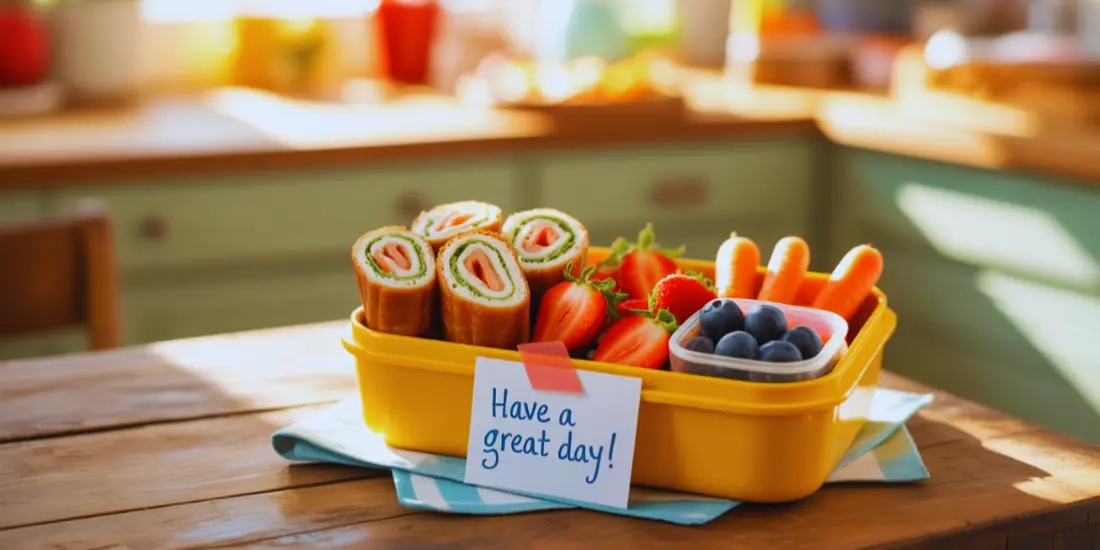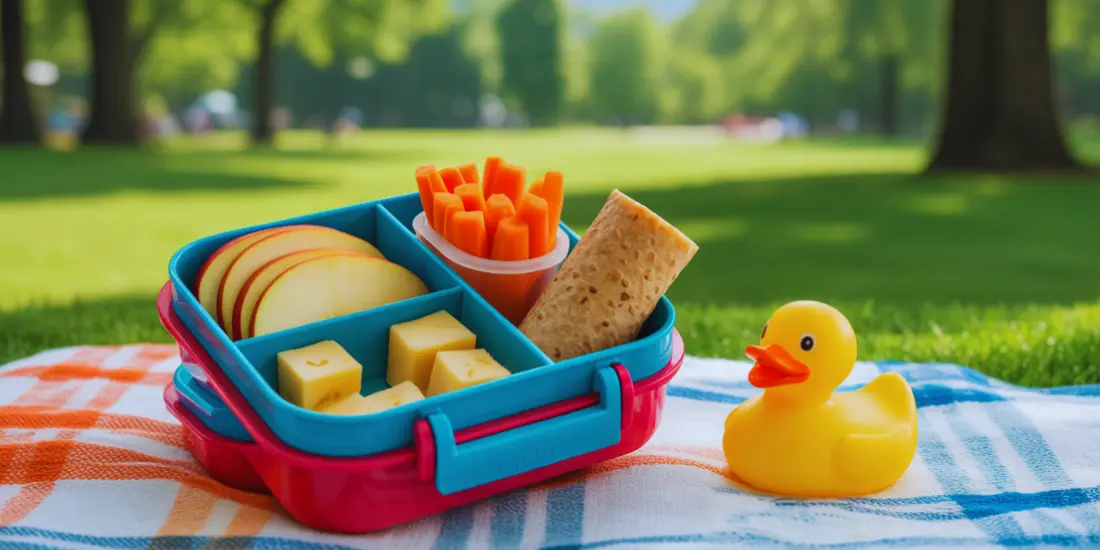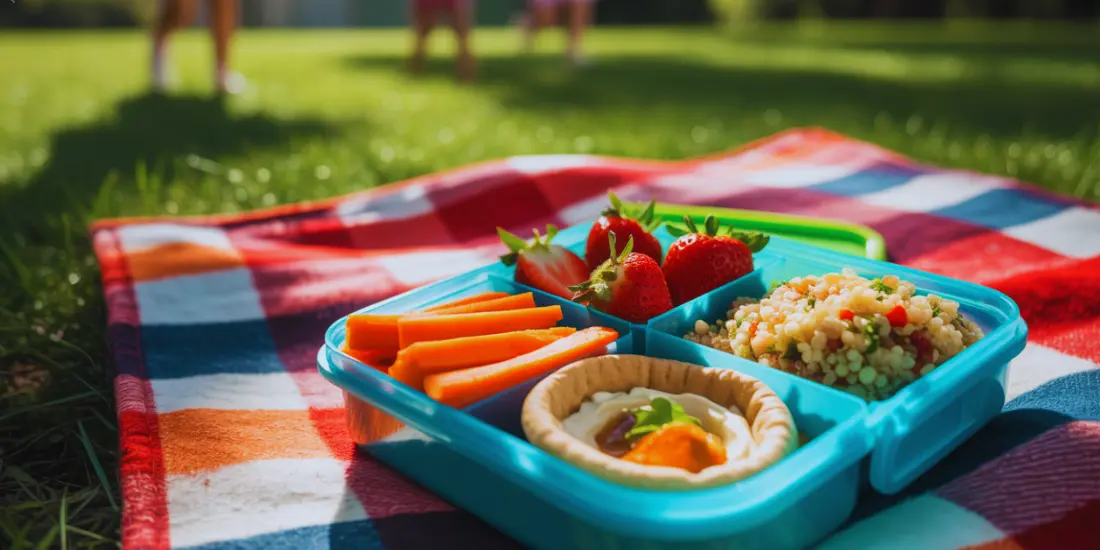Every morning routine begins with that familiar shuffle into the kitchen, where the bleary reality of packing lunches transforms from obligation into opportunity. As a nutritionist mom who has witnessed countless midday meal disasters, I’ve learned that the magic formula isn’t about perfection.
It’s about understanding that young age appetites demand variety options while parents desperately seek sustainable containers and little prep solutions. The sheer joy of watching full bellies emerge from brimming lunchboxes comes not from elaborate presentations, but from mastering the art of rotation weekly through different categories that prevent lunch boredom before it strikes.

What separates successful lunch packers from those who fall prey to monotony prevention struggles isn’t access to fancy ingredients. It’s recognizing that nutrition tentpoles must align with realistic approach expectations.
When you strike a balance between what children actually eat versus what we hope they’ll embrace, suddenly tons of nutrients become accessible through fresh ingredients that keep them satisfied without requiring much time investment. The biggest fear among parents isn’t that kids will be left hungry. It’s that we’ll lose our semblance of control over those crucial 7 hours when focus and energy determine academic success, making every handwritten note and heart-shaped creation an investment in their power through capability.
Lunch Packing Ideas
The morning fill routine becomes much easier when you’ve mastered the art of temperature control and timing. Most parents struggle with the hardest part – ensuring perishable foods stay safe while maintaining optimum freshness. Here’s what I’ve learned after years of packing food: freeze bottles filled only a quarter full, then lay them side down overnight. This creates ice pack functionality that gradually melts, keeping everything at 40°F below the danger zone.
Never pack items like poultry items or chicken vegetable dishes without proper cold packs positioned at the top and bottom of your insulated soft-sided container. The narrow openings of most lunch boxes actually work against you – fill them strategically by placing frozen yogurt or squeezable yogurt containers as natural cooling agents.
Prepare meals the night before and let them stay in the fridge until morning – this longer cold approach prevents the consistency-avoiding disasters that happen when food sits at room temperature. I always taste everything before packing because properly seasoned food with correct consistency makes the difference between a balanced meal and cafeteria trading fodder.
Pack pastas and soups in a thermos separately from cold items, but remember that melting changes can turn your carefully crafted, balanced fruit and vegetable carb combination into a soggy mess. The extra step of using parchment paper dividers and planning your preparation time around chilled refrigerator storage has saved me countless mornings of hectic scrambles.
Healthy Kids Lunch Ideas
When picky eater challenges meet the reality of daycare preschool routines, the art of lunch packing transforms into a strategic dance between nutrition and acceptance. The pediatric dietitian’s perspective reveals that balanced, nutritious meals don’t require elaborate preparations; instead, focus on tried-and-true plan combinations that your child has already embraced.
Mini works become powerful allies when you’re dealing with grade school appetites that seem to fluctuate daily. Consider how strawberry quartered pieces paired with sunbutter create familiar comfort, while carrot flowers add visual appeal without intimidating unfamiliar flavors. The 30 minutes you invest in weekend prep pays dividends throughout the week, especially when you pull items from pre-organized containers that maintain a variety of rice options alongside sandwiches and idlis.

The modern approach to baby food evolution recognizes that south indian and north indian traditions offer remarkable, easy menu solutions that travel well in lunch box containers. Baked tofu with teriyaki sauce provides protein nutrition that satisfies without the complexity of heating food requirements, while hard-boiled eggs offer portable, easy-to-eat options that complement chia pudding made with coconut milk.
Hummus dippers paired with pita chips create fun meals that encourage exploration, and roasted chickpeas seasoned with cinnamon salt bridge the gap between healthy wholesome nutrition and crunchy snack satisfaction. The array of colorful presentations becomes effortless when you assemble sandwiches with cream cheese and bagel seasoning, creating balanced meal experiences that foster appreciation for diverse flavors without overwhelming young palates.
Protein Ideas
Building protein foundations requires understanding that turkey roll-ups wrapped in a tortilla create portable nutrition without traditional boundaries. Ham paired with mayo on wheat bread transforms ordinary ingredients into fuel, while salami brings Mediterranean flair to standard combinations.
Tuna salad served alongside crackers offers omega-rich alternatives, and egg salad provides complete amino profiles that support growing bodies. White beans mixed into pasta salad create plant-powered sustenance, while sunbutter spread with natural sweetness replaces conventional jelly combinations for allergen-conscious families.
Roasted chicken prepared ahead eliminates daily decision fatigue, and chicken nuggets paired with homemade dipping sauce satisfy familiar preferences while maintaining nutritional integrity. Fried rice incorporating yesterday’s proteins exemplifies resourceful meal planning, and carrot sticks provide essential crunch that complements protein-rich centerpieces without overwhelming young palates.
Fruit Ideas
Fresh berries and crisp apples benefit from strategic lemon application to stay fresh throughout morning routines. Bananas and oranges require no preparation yet deliver consistent energy, while grapes should be halved for safety without sacrificing natural sweetness. Watermelon and pineapple chunks bring tropical elements to conventional lunch rotations, and pear slices paired with mango pieces create texture variety that maintains interest across weekly cycles.
Fresh options consistently outperform dried alternatives in hydration support, though kiwi and dried apricots serve strategic purposes during certain seasons. Cranberries and dried cherries alongside raisins and dates provide concentrated energy bursts, particularly valuable when pits have been carefully removed to ensure safe consumption experiences.
Vegetable Ideas
Slice raw vegetables during weekend bulk preparation sessions for easy lunchbox-filling throughout busy school mornings. Cucumbers, celery, carrots, and peppers maintain structural integrity when properly stored, while snow peas and cherry tomatoes add color diversity without requiring complex preparation techniques. Avocado transforms everything it touches, elevating simple combinations into creamy, satisfying experiences that appeal to developing taste preferences.
Smart preparation strategies involve washing, cutting, and portioning vegetables immediately after grocery shopping, creating grab-and-go options that eliminate morning stress while ensuring consistent vegetable intake throughout school weeks.
Crunchy Snacks
Parents should be 100% sure about which snacks children will eat first when designing lunch hierarchies. Crackers, pretzel sticks, and thins provide reliable satisfaction, while dry cereal serves dual purposes as both snack and familiar comfort food. Tortilla and corn chips alongside potato chips satisfy salt cravings, though goldfish and nori seaweed snacks introduce international flavors gradually.
Pirate booty, animal crackers, and veggie straws bridge the gap between indulgence and nutrition, creating positive associations with healthier alternatives while maintaining the satisfying crunch that makes snack time successful.
Sweet Treats
Understanding that there are no foods classified as bad foods helps parents approach sweet treats with balanced perspective. Dark chocolate-covered granola bars provide antioxidants alongside satisfaction, while yogurt chocolate-covered alternatives deliver probiotics with familiar sweetness. Fruit leather and fruit gummies offer concentrated fruit nutrition in appealing formats, though small amounts of mini cookies serve equally important roles in creating positive lunch experiences.
The key lies in portion control and strategic placement within larger meal contexts, ensuring that sweet elements complement rather than overshadow nutritional objectives while maintaining childhood joy around food discovery.
Rice-Based Lunch Ideas
When packing rice for school meals, the secret lies in transforming this humble staple into exciting combinations that keep children engaged. Smart parents know that peas, rice, and vegetable pulao work brilliantly when paired with boiled eggs or paneer chunks, creating balanced, nutritious meals that satisfy growing appetites.
The beauty of rice-based preparations is their versatility – spinach pulao mixed with soya chunks offers plant-based protein, while carrot rice provides natural sweetness that appeals to young palates. Lemon rice with beans poriyal creates a tangy-crunchy contrast, and curd rice with potato fry delivers comfort food satisfaction.

For busy mornings, leftover chicken transforms into egg rice when combined with scrambled additions, while veg fried preparations using stir-fried techniques maximize flavor retention. Beetroot additions create visually appealing pink variations that intrigue children, and dal rice combinations with moong dal provide complete amino acid profiles essential for development.
Contemporary lunch strategies focus on mixed cooked approaches where tomato rice meets cauliflower poriyal, or butter garlic preparations enhance simple capsicum rice. Sambar rice with carrot fry offers South Indian authenticity, while tamarind rice paired with baby potato curry creates complex flavor profiles. Kurkure bhindi adds unexpected crunch to rasam rice, and popcorn cauliflower transforms traditional veg biryani into playful experiences.
The key to successful rice packing involves creating fun presentations – rice balls shaped appealingly, butter carrot additions for natural sweetness, and broccoli poriyal for nutritional density. Paneer poriyal works exceptionally with paruppu sadham, while onion raita provides a cooling contrast to spiced preparations. Potato varuval enhances beetroot lemon combinations, creating meals that stays warm in insulated containers while maintaining textural variety that prevents monotony.
Sandwich & Wrap Ideas
The evolution of sandwich making has moved beyond basic bread combinations toward innovative wrap concepts that maximize nutritional value while maintaining child appeal. Spinach corn mixtures create vibrant cheese sandwich fillings that disguise vegetables effectively, while veg mayo preparations offer creamy textures without artificial additives.
Egg mayo and chicken mayo provide protein-rich options that work equally well in veggie wrap formats or traditional bread presentations. Mixed vegetable combinations within chapati create vegetable roll alternatives that feel familiar yet exciting. Paneer cheese preparations transform simple chapati egg combinations into substantial meals, while chana masala wraps offer fiber-rich plant protein that sustains energy levels throughout school hours.
Creative wrap techniques involve banana sushi presentations using peanut butter and sunflower seed spreads, where roll slice methods create finger-friendly portions. Thai peanut sauce applications elevate vegetable roll concepts, while sugar-free alternatives replace traditional strawberry jam in French toast adaptations. Pizza sauce transforms cheese waffle combinations into familiar flavors, and protein banana additions boost nutritional profiles naturally.
Mashed avocado serves as a favorite spread base for curry chicken preparations that can be served deconstructed for picky eaters. Sliced bread alternatives include pita and naan options, while quinoa tortilla provides gluten-conscious choices. Mini bagel formats work perfectly with a variety of bagel toppings, and butternut squash purees create naturally sweet spread alternatives that children gravitate toward without recognizing the vegetable content.
Roti Ideas
The art of chapati preparation extends far beyond basic flour and water combinations. Beetroot and carrot additions create naturally pink chapati and vibrant orange variations that transform ordinary meals into colorful experiences.
Spinach chapati offers nutritional density while maintaining the familiar texture children expect. Paneer fillings work exceptionally well with aloo paratha, creating protein-rich options that satisfy growing appetites. Quail egg incorporation adds premium protein sources, while potato patties with eggless mayonnaise provide familiar flavors in unexpected presentations.
Homemade ketchup paired with toasted paneer creates restaurant-quality experiences at home. Scrambled eggs with spinach, carrot, and cabbage chapati combinations offer complete nutritional profiles. Potato tots wrapped in cauliflower fry seasoned bread provide textural variety that keeps children engaged.
Banana chapati serves as both a meal and a dessert, while carrot chips add crunchiness without processed ingredients. These butter masala-influenced preparations ensure every bite delivers both nutrition and satisfaction.
Pasta Ideas
Deconstructed pasta approaches revolutionize traditional serving methods by placing cooked pasta in separate containers alongside various sauce dip options. This strategy allows children to control their experience while ensuring protein fruit and fresh veggies integration.
Pesto orzo delivers concentrated herb nutrition, while pasta veggie-loaded preparations hide vegetables within familiar textures. Tomato-free sauces accommodate dietary restrictions without sacrificing flavor complexity. White sauce pasta macaroni combined with hidden veggie ingredients creates nutritionally dense meals that taste indulgent.
Red sauce preparations with cajun chicken offer protein variety, while chapati noodles made from leftover chapati reduce food waste creatively. Pesto pasta maintains its flavorful, convenient nature while being customizable and balanced according to individual preferences. These tomato pasta alternatives ensure every child finds appealing options within healthy parameters.
Tiffin Ideas
Mini idlis with idli podi provide traditional South Indian nutrition in child-friendly portions. Beetroot idli creates visually appealing pink idlis that intrigue young eaters, while carrot uthappam offers vegetable nutrition disguised as familiar comfort food.
Tomato chutney alongside raw onion and tri colour preparations provides flavor complexity within 5-minute preparation timeframes. Beetroot idiyappam and plain idiyappam offer textural variety with minimal cooking effort. Paneer bites and paneer fingers deliver concentrated protein sources, while spinach poori incorporates leafy greens seamlessly.
Uthappam tomato combinations create pizza paratha experiences that bridge cultural preferences. Sweet wheat preparations and mini idlis ensure portion control while maintaining satisfaction. Kovakkai sambar and mini sambar provide traditional flavors in manageable quantities that support cultural food connections.
Cold Lunch Ideas
Pancake and egg combinations turn sandwiches into breakfast-inspired lunch options that feel special rather than routine. Greek yogurt with mashed beans creates protein-rich bases, while broccoli bites offer simply prepared vegetables that are loaded with nutrients.
These protein boost additions support sustained energy throughout school days. Vegetable French and savory French preparations using leftover vegetables reduce waste while creating appealing textures. Egg oatmeal represents a cross between traditional breakfast and lunch concepts, with the addition of eggs making oatmeal creamy and fluffy, boosting satisfaction levels.
Sweet potato and quinoa cheddar combinations using almond flour create sweet tots with just 4 ingredients. These flavorful, sweet options alongside crackers and cheese provide simple, familiar choices that are always hit combinations. Mini pizza at perfect size portions, plus diy nachos with tortilla chips, cheese, vegetables, guac salsa, and sour cream ensure packaged snack alternatives that include protein while maintaining appeal.

Conclusion
After navigating thousands of idea possibilities in lunch preparation, the journey becomes less about rigid planning and more about understanding food preferences and likes and dislikes. From observing families across each country, I’ve seen many ways parents approach the mind-boggling challenge of creating simple meals children will enjoy eating. Success comes from the easy make philosophy and accepting that preferences vary dramatically.
Developing a sense of Healthy eating in kids through different and unique lunch ideas allows parents to also foster good habits in their children, promoting overall development. The practical reality extends beyond nutrition into emotional satisfaction. When you’ve worked your way through container systems and realized presentation matters, sometimes the solution is letting them tuck dried fruits with crackers or discovering diced celery becomes acceptable with familiar flavors. The baby steps approach proves most effective – introducing elements gradually while maintaining familiar foundations.
FAQs (Frequently Asked Questions)
Q: How can I ensure my child’s lunch stays fresh throughout the school day?
Always include a water bottle and consider temperature-sensitive items carefully. You won’t find better results than proper chilling and breathable containers.
Q: What’s the best approach when my child rejects new lunch ideas?
Focus on baby steps – food preferences develop over time through multiple exposures.
Q: How do I balance convenience with nutrition in packed lunches?
Use the easy make principle – prepare mix-and-match components for weekly flexibility.
Q: What should I do if my child comes home with an untouched lunch box?
Remember that always wanting familiar foods is normal. Gradually modify accepted items rather than complete overhauls.
Q: How can I make lunch packing more efficient during busy mornings?
The food packing process becomes smoother when you prepare components in advance and use plastic containers systematically.
Q: Is it normal for children to have strong food preferences?
Absolutely – likes and dislikes are developmental, and food preference patterns often reflect comfort and familiarity needs.
Q: What’s the most effective container system for kids’ lunches?
Stainless steel options with multiple compartments work best, though quality lunch bag systems can accommodate various container types effectively.
Q: How do I handle my picky eater who only accepts specific brands or preparations?
Work within their comfort zone first, then make microscopic changes. If they accept one type of crackers, gradually introduce similar textures before attempting completely different foods.
Q: Should I be concerned if my child’s lunch preferences seem limited?
Most children naturally expand their preferences over time. Focus on ensuring adequate nutrition within their accepted foods rather than forcing variety.
Q: What’s the best way to introduce new foods without causing lunch box rejection?
Include tiny portions of new items alongside completely familiar favorites. This reduces pressure and allows natural curiosity to develop without risking their entire meal.




Pingback: 15 GOOD HABITS FOR KIDS - Smartkidsemporiam.com